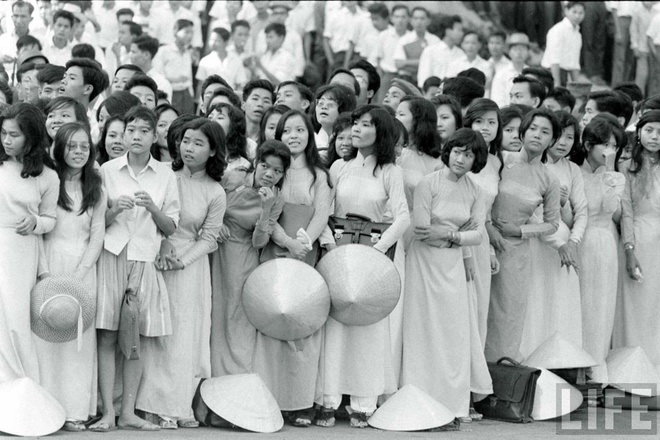Over hundreds of years with many variations, ‘ao dai’ (Vietnam’s traditional long gown) remains the country’s iconic dress which helps highlight the beauty and slenderness of women.
‘Ao dai’ has been seen in the wardrobe of every Vietnamese woman, and it has also been featured in many forms of artwork, including poems, songs, paintings, and photos.
The traditional dress, which dates back hundreds of years, is closely associated with local women’s lives and has witnessed many historical ups and downs.
In the past, Vietnamese women wore ‘ao dai’ most of the time, capturing admiring glances and attention from other people.
With its subtle design, the dress always has its own way to make the wearers more beautiful, showing the graceful curves of a woman’s body and creating the feelings of slenderness and graciousness.
Tuoi Tre News would like to introduce some photos of historical Vietnamese women wearing the ‘ao dai.’

In this file photo, a group of Vietnamese women are seen wearing ‘ao dai’' while having their meal. Photo: Tuoi Tre

A mother is seen taking her child to the market in the early 20th century. Photo: Tuoi Tre

People are pictured going to a fish market in Saigon, now Ho Chi Minh City, in 1904. Both buyers and sellers wear ‘ao dai’ in this file photo. Photo: Tuoi Tre

A woman is shown selling vegetables and fruits near Ben Thanh Market in Saigon in the early 20th century. Photo: Tuoi Tre

In the 1950s, ‘ao dai’ which featured flowers on its fabric was women’s favorite item of clothing. Photo: Tuoi Tre

Vietnamese women are seen walking on the street in Saigon. Two lappets of their ‘ao dai' fly in the wind. Photo: Tuoi Tre

A corner in downtown Saigon in the early 1960s. Photo: Tuoi Tre

Vietnamese women wear ‘ao dai’ to go to the market. Photo: Tuoi Tre






Like us on Facebook or follow us on Twitter to get the latest news about Vietnam!


















































